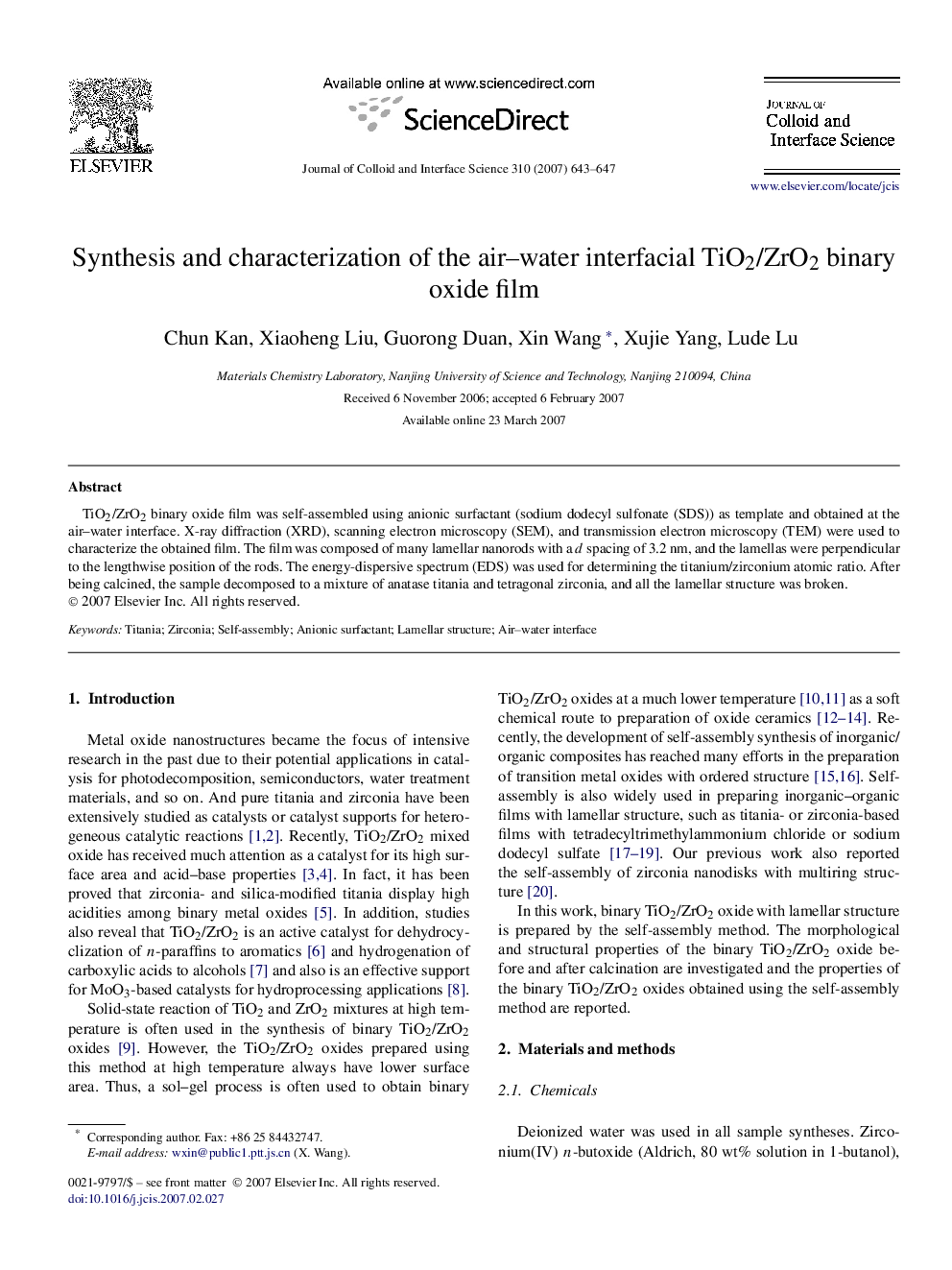| Article ID | Journal | Published Year | Pages | File Type |
|---|---|---|---|---|
| 612453 | Journal of Colloid and Interface Science | 2007 | 5 Pages |
TiO2/ZrO2 binary oxide film was self-assembled using anionic surfactant (sodium dodecyl sulfonate (SDS)) as template and obtained at the air–water interface. X-ray diffraction (XRD), scanning electron microscopy (SEM), and transmission electron microscopy (TEM) were used to characterize the obtained film. The film was composed of many lamellar nanorods with a d spacing of 3.2 nm, and the lamellas were perpendicular to the lengthwise position of the rods. The energy-dispersive spectrum (EDS) was used for determining the titanium/zirconium atomic ratio. After being calcined, the sample decomposed to a mixture of anatase titania and tetragonal zirconia, and all the lamellar structure was broken.
Graphical abstractA TiO2/ZrO2 binary oxide film, composed of many lamellar nanorods, is self-assembled at the air–water interface using an anionic surfactant as a template.Figure optionsDownload full-size imageDownload as PowerPoint slide
